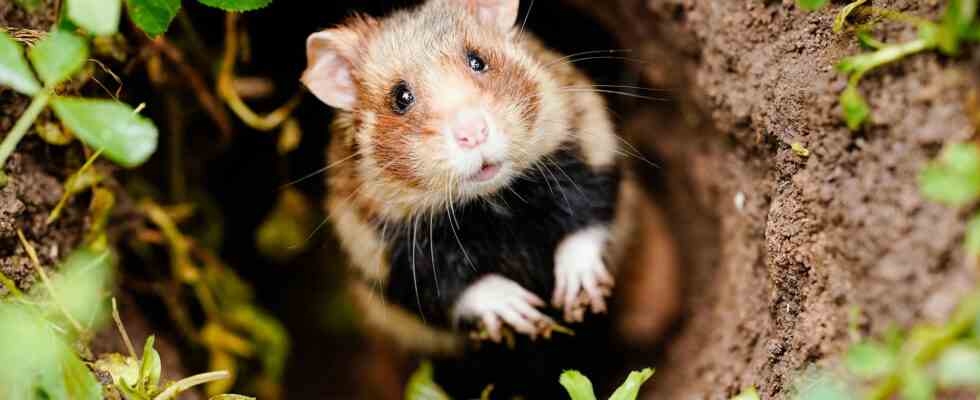Status: 10/01/2022 12:04 p.m
A million species are threatened with extinction. Experts name five main reasons for this and outline countermeasures. What the proposed solutions look like and why we should hurry with them.
What is biodiversity and why is it important?
Animals and plants have important functions in our ecosystem. Without them we could not exist on our planet. This biodiversity provides food, provides active ingredients for medicines, is used for recreation and plays an important role in regulating the climate. According to estimates, there are almost nine million animal and plant species worldwide. Most of them are still undiscovered.
A variety of different animal and plant species is important for the preservation of biodiversity. Because different species occupy different niches in the ecosystem. If species disappear, ecological cycles are disturbed. In an ecosystem, the different animals and plants depend on each other. For example, if there are fewer insects, fewer flowers will be pollinated, birds will have less to eat and harvests will be lower. The decline in biodiversity is therefore also a threat to humans.
In Germany, too, numerous animal species are threatened with extinction, such as the ground squirrel…
Image: picture alliance / Zoonar
… or the field hamster. Numerous amphibians are also on the Red List.
Image: dpa
What happens when more and more species become extinct?
The numbers are depressing: the rate of species extinction is currently around a hundred times higher than the average for the last ten million years: around 25 percent of animal and plant species are affected. This was presented by the United Nations World Biodiversity Council (IPBES) in 2019 in a “Global Assessment” Today 60 percent fewer vertebrates live on earth than in 1970, in Germany the typical bird species of the agricultural landscape decreased by more than 36 percent between 1998 and 2009. In the coming decades there is a risk of further loss of up to a million species worldwide – warns the World Biodiversity Council: If a change does not take place in a timely manner, the consequences for nature and people will be devastating, the scientists predicted.
Intact ecosystems are more resistant to the consequences of climate change and can even mitigate them. At the same time, nature makes human development possible in the first place, as the IPBES scientists write: This is how we humans benefit from the achievements of insects. In 2022, the Food and Agriculture Organization of the United Nations warned that pollination performance was also declining due to the global death of bees. As bees help produce food such as fruit, global food security is also at risk.
What are the causes of species extinction?
The IPBES experts name five “direct drivers” that are causing species extinction worldwide and are mutually reinforcing. The main driver is how humans have been using and exploiting land and oceans for decades. One factor is agriculture with many monocultures: insects and other creatures need different plants and flowers to survive.
Another cause is the exploitation of nature, for example through deforestation. Climate change is also one of the reasons for the extinction of species: animal and plant species cannot adapt to the high temperatures as quickly and find less food. Invasive species are also drivers of species extinction – because animals and plants can become native to foreign regions and thereby damage ecosystems considerably.
And the experts name environmental pollution as the fifth cause: plastic waste, heavy metals or solvents pollute the oceans. one According to a study by the Alfred Wegener Institute (AWI) and the WWF there is plastic in the stomach of one in three seabirds. Microplastics are already entering our food chain through animals – the consequences for our health have hardly been researched.
What solutions are there to stem the extinction of species?
According to IPBES, however, there are also measures that can bring about change. In agriculture, the scientists recommend more crop rotation and more mixed cultures on our fields as well as retreat areas for animals. Monocultures can also result in pests becoming resistant to pesticides and the soil becoming drier. Another demand is to strengthen environmental laws and their implementation worldwide. The EU Biodiversity Strategy can be a step towards this: By 2030 it is planned to use 50 percent less pesticides within the EU, to establish 25 percent organic farming and 30 percent of the areas as protected areas.
But people can also make a contribution to the protection of species in everyday life: For example, by ensuring a climate-friendly and energy-saving lifestyle. One Study by the WWF comes to the conclusion that nutrition and the resulting land requirements for fields and animal husbandry also have an impact on biodiversity. The “biodiversity footprint” calculated from this is therefore significantly reduced by a vegetarian, flexitarian or vegan diet.
This could also protect nature in countries like Brazil. Because animals in Germany are often fed with exported soy from monocultures, for which rainforest areas are also cleared. According to the environmental organization, the consumption of regional and seasonal foods can also make a contribution to species protection.

